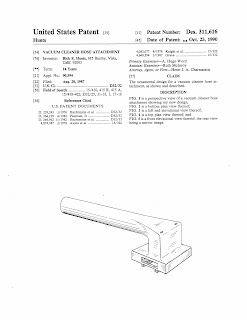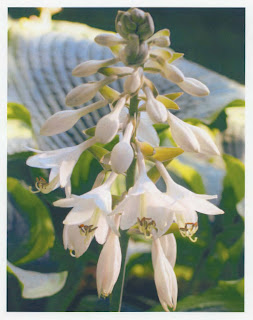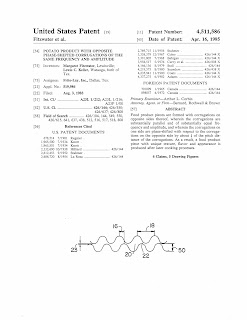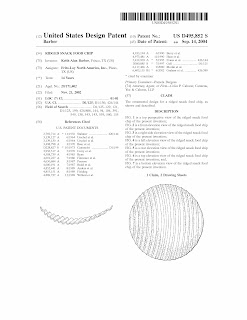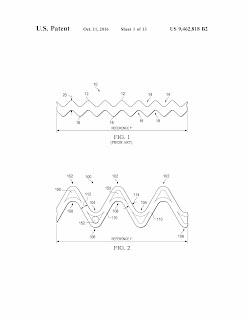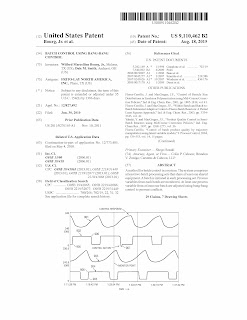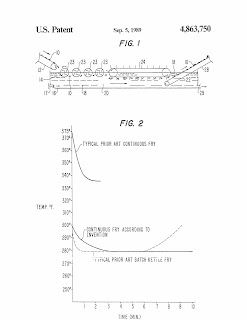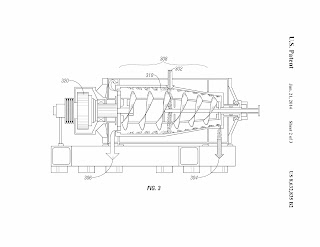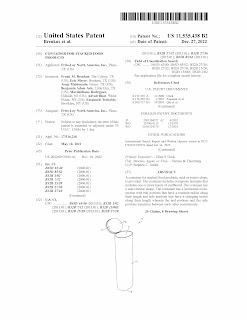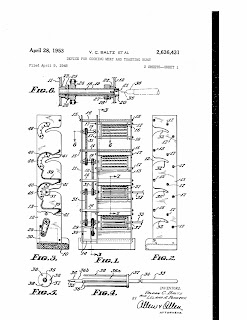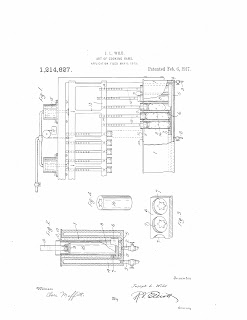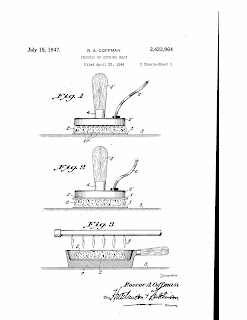Shoes are amazing. I mean, I really like shoes. I am a shoe person. If you work in Fondren, chances are you've noticed some of my (very impractical) shoes.
 |
Just in case you were wondering about today's pair
|
In light of that, I cannot believe I've hardly spent any time on shoe IP!
But, I attended a talk at the Rice Business school with Stuart Weitzman recently (I didn't win the raffle for custom boots and am still feeling pain), and it really inspired me to think about shoe IP. I even asked Mr. Weitzman about his IP, wondering if it was challenging to register his personal name for a trademark. He said it was no problem--which I didn't expect, but then, there probably weren't a lot of Stuart Weitzmans trying to register their names for fancy shoes.
The thing is, I recall just staring into the window the the Stuart Weitzman store in the Galleria, ogling those shoes, when I was younger. It was the kind of store I didn't even have an excuse to go into, so I just stood outside and lusted after the display shoes, which were beyond impractical for a 13 year old. At the time, I was just coming into my unique shoe tendencies, which were inspired in no small part by the fact that I attended a uniformed school, where we had to wear tennis shoes most days and "dress" shoes on dress days. The "dress" shoes were (for some unfathomable reason) Doc Martens, and every single girl in my grade always managed to have the exact same style of New Balances. But then I discovered that some athletic shoes also came with metallic striped colors. And Vans released a style that turned (in my case) pink in the sun. Once I found out I didn't have to wear plain athletic shoes to meet the standards of a uniform, my life's work of finding unique shoes began. Athletic shoes in pink suede with faux fur? Check. Throwback Roos complete with zippered pocket and neon colors? Check. Buckled mules with wooden soles? Check. My grandmother's vintage Uggs (about four sizes too large), before they got popular years later? Check. Bright orange patent leather flat platforms? Check. High heels on sparkly flip flops? CHECK!
As an adult, the world of shoes only grew wider. And in celebration of how much fun shoes are, and how they can come in any imaginable variety today thanks to designers like Stuart Weitzman, let's explore some IP.
We really must start with Mr. Weitzman's trademark, since it inspired this whole entry. Now, there are many registered marks under that name, for a variety of goods and services. But what we want most are shoe-related marks. A number are the word mark Stuart Weitzman, for "retail store services featuring shoes" and etc. Like, 3 live ones: 2749908, 5110490, and 4971730. The trademark registration number for just shoes as a good is 1386002, dating back to 1985.
Two others stand out to me a little more. The first (registration no. 2571208) is for the word mark phrase "A LITTLE OBSESSED WITH SHOES", which is from an early advertising campaign that was brought up during his talk. It worked brilliantly, because it was a clever strategy to spread brand familiarity and even loyalty, rather than just a shoe. Unfortunately, I can't find an image from the earliest of these, but I have shared below the images used as specimens in the TSDR.
 |
I understand this one not at all
|
 |
But note the bottom left: a little obsessed with shoes
|
Secondly, there's the registration for the architectural design of his stores. Apparently, this unique look by the famous
Zaha Hadid helped him achieve new markets. It's also a good reminder that IP goes beyond logos and brand names, and into the overall branding strategy.
3797782 is for trade dress, a niche sort of service mark.
 |
A registered retail store appearance
|
I hope Mr. Weitzman forgives me for my poorly worded question, and for drooling on his store's windows decades ago.
Luxury shoes aren't just for women or high fashion. Probably the most iconic, recognizable shoe today is an Air Jordan. It is equally acceptable for a man to collect and covet shoes when it comes to this brand, whereas one might otherwise (at least in certain age and social groups) face some scrutiny or censure.
The currently active word mark "Air Jordan" was first registered in 1985, no. 1370283. It does not claim any color, style, etc., just the characters, and is for footwear and athletic clothing. Michael Jordan might have been long remembered for his basketball career, but this brand (actually owned by Nike) has made him truly immortal.
 |
Who doesn't know this?
|
My first thoughts when I think of the brand are of the jumping silhouette imposed on the words Air Jordan, but surprisingly that is not a registered mark and never was. Issued serial no.
74041037 in 1990, this combo word and design trademark was marked abandoned and finally invalidated in Nov. 1994.
 |
I don't know this
|
I clearly don't keep up with this brand, since they've been using registration no.
3725535 trademark design since 2009. It's incomprehensible to me, unless they're trying to move away from Michael Jordan as a person. Those jumps were famous. Perhaps with time, they assume that reputation has faded, or that the Nike swoosh (too many registrations to list) is branding enough. Or perhaps they just want to use it without having to manage it as a trademark, since it still shows up in a substantial number of their specimen photos.
 |
Why yes, they did select something out of date for a specimen
|
In my defense, their specimen for the word mark has the silhouette, and so does the small icon on the Wikipedia brief. So there.
 |
Why would they abandon this? To move away from the Jordan person?
|
Want another shocking piece of shoe trademark info? Louboutin (a brand of shoe as swoon-worthy as Stuart Weitzman's) does not own that specific color of red as applied to the sole of a shoe. At least, not in the U.S. You can see on the
TSDR record that it is registered in France.
I'd like to move away from trademarks, though, and look at a few design patents. Mr. Weitzman mentioned design patents when I asked my (poorly phrased) question. He seemed dismissive, but I notice a few brands rely quite heavily on them.
First, Nike was probably the frequent assignee I found in my search. Here's an example of one that might relate to Air Jordans, US D1,004,270.
 |
Could be Air Jordans, or it could just be citing them
|
Another designer name I notices, if not as often as Nike, was J. Choo. Jimmy Choo makes some
very nice shoes; that's a brand up there with Weitzman and the likes of Louboutin. Even Terry Pratchett knows they're good shoes (if ever an author wrote
some great librarians, it was Sir Pratchett--and I don't just mean
The Librarian). This is a fancy shoe. To see the color version of the photo, visit
this link.
 |
Almost has a early 1900s feel
|
And finally, because not everything in life is about fancy shoes, here's a patented Crocs design. I've never owned a pair of Crocs, but I'm aware of their popularity, and that everyone wants to copy them. This version won't be duped! Thanks, US patent
D1,001,431.
 |
Don't copy these
|
With that, I need to stop looking at shoes. I already went shoe shopping and bought another pair thanks to these recent events. Just remember: if you like the shoe, it doesn't matter if it's fancy or expensive. What matters is if you can wear it and you like it! Fit isn't event that important if they're as good as the pair below, which are so cheap they don't even have a brand.
 |
Too cheap for functional buckles, but still great
|


